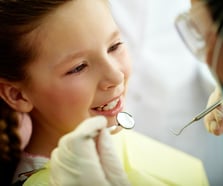Patient safety is always of the utmost concern, which is why many practitioners wonder how safe conebeam CT scans are. It’s important to understand how they compare to 2-D scanners and then look at how you can limit radiation exposure.
Are They Safer Than 2-D Scanners?
While 3-D scanners emit more radiation than 2-D scanners do, practitioners agree that CBCT, or 3-D, scanners are typically safer because they don’t require as many scans in order to get the required images. For instance, if you use a 2-D scanner to photograph an area, you will likely have to run the scan multiple times. Each time you run the scan, the patient is exposed to radiation. This radiation adds up and often exceeds the radiation on a CBCT scan.
With CBCT technology, you usually only have to run the scan once, meaning the patient is only exposed to one dose of radiation. Because of that, it is typically considered to be the safer option.
Of course, it’s important to note that CBCT scans do not replace 2-D scans. You will still use both, so it is important that you limit the radiation exposure when using your CBCT machine. That way, you can utilize this technology without harming your patients.
Limiting Radiation Exposure
Even though CBCT is considered to be the safer option, you can make it even safer by limiting radiation exposure. Limiting the exposure makes your patients even safer, which is good for your patients and your practice.
One option is to go with a focused field unit. This unit lets you focus low levels of radiation on the region of interest instead of dousing the patient in radiation. That way, you only emit the necessary amount of radiation.
You can also use protective equipment. Studies have shown that leaded glasses reduce radiation explore to the eye lens by more than 60 percent. It does this without hurting the image, so you can still get the scans that you need while protecting your patients.
A leaded thyroid collar is another option. Researchers found that placing a thyroid collar around the front of the neck reduces radiation exposure by close to 50 percent. Again, it is able to do this without hurting the image.
Finally, only perform the scans when necessary. Scanning someone when it isn’t necessary means you are exposing the person to radiation when it isn’t necessary. While these scans are safer than other CT scans, you still don’t want to overdo it.
CBCT scanners are an excellent addition to any dental practice. Still, you need to be mindful that they emit radiation. That means you need to put procedures in place to provide your patients with the safest care available. From buying the right equipment to only scanning patients when necessary, you can protect your patients and utilize this technology at the same time.




Leave Comment